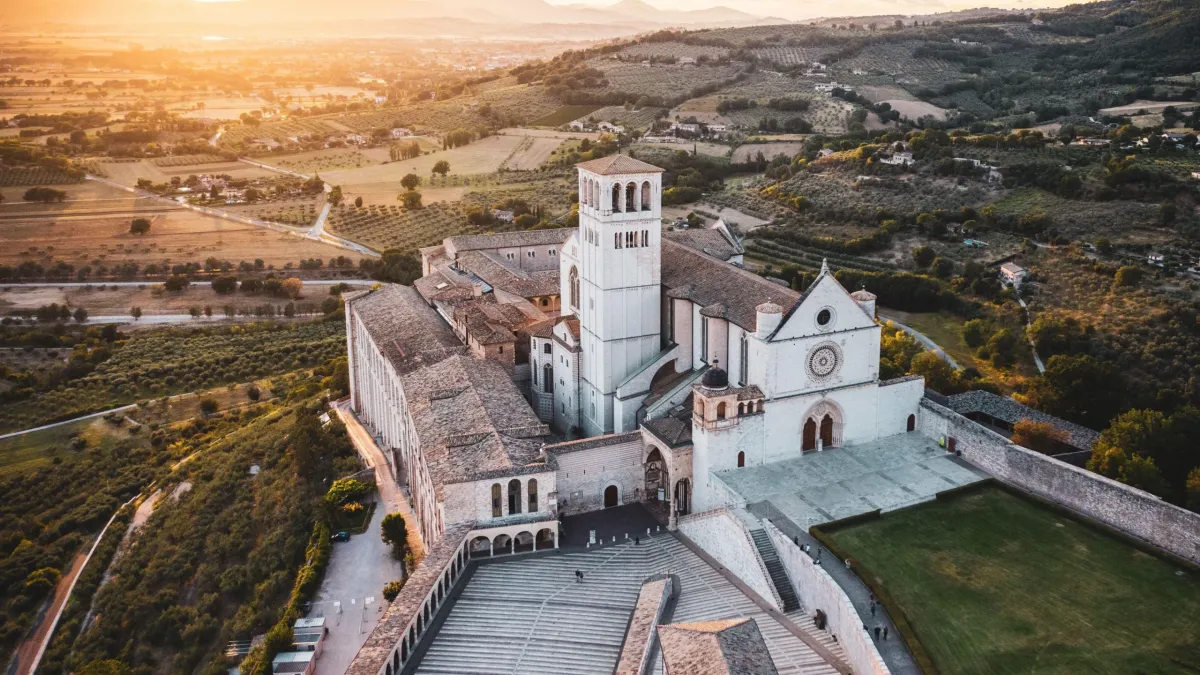1 WEEK IN UMBRIA
PRIVATE TOUR
The hidden gems of central Italy: Assisi, the land of Saint Francis, quaint Spoleto, Perugia, the perfect mix between traditions and modernity, Orvieto and its majestic Duomo. At the discovery of Umbria and its wonderful villages and small towns.
HIGHLIGHTS
- Spoleto, urban harmony across the centuries
- Orvieto and Civita, the cities “on the rocks”
- Perugia, the perfect mix between tradition and modernity
- Assisi, the extraordinary land of Francis
What’s included
Accommodations with Continental Breakfast:
- Days 1 to 3: 3* to 5* Hotel in Todi area
- Days 4 to 7: 3* to 5* Hotel in Assisi area
The Hotel list is available upon request
Transfers:
- Day 1: Pick up and transfer to your accommodation in Todi area
- Day 8: Transfer to Rome Fiumicino Airport / Rome Railway Station
All transfers by private car (2 pax)/ minivan (3 to 6 pax)/ minibus (7 to 15 pax)
Guided Visits / Tours / Activities:
- Day 2: Full-day excursion to Spoleto and Montefalco – Visit of a local Wine cellar with tastings
- Day 3: Full-day excursion to Orvieto and Civita di Bagnoregio – 2-hour private walking tour of Orvieto city centre with an Authorised Tourist Guide
- Day 4: Full-day excursion to Todi and Deruta – Visit of a local artisan laboratory of ceramics in Deruta – Drop off at your accommodation in Assisi area
- Day 5: Full-day excursion to Perugia – 2-hour private walking tour of Perugia city centre with an Authorised Tourist Guide – Umbrian Cooking Class in Perugia area
- Day 6: Full-day excursion to Assisi – 2-hour private walking tour of Assisi city centre with an Authorised Tourist Guide
- Day 7: Truffle Hunt with lunch in Assisi area
All tours by private car (2 pax)/ minivan (3 to 6 pax)/ minibus (7 to 15 pax)
Admission Tickets to:
- Duomo Cathedral in Orvieto
- Orvieto Underground in Orvieto
– Full emergency assistance 24 hours/day by our Back Office
– List of recommended restaurants and deli shops along the itinerary
– All taxes
Options:
- Other options upon request
Benvenuti in Italia, and welcome to Umbria!
Umbria is the greenest region of Italy, and its citizens are famous for their hospitality.
This morning, our first stop will be Spoleto, a medieval hill town in the Umbria region, famous for its summer music festival, “Festival dei Due Mondi”. Thick walls and a magnificent gorge surround the city, and fine medieval and Roman monuments sit along the streets. The Duomo is one of Spoleto’s most pleasing sights: dating back to the 12th century, the cathedral is set against a backdrop of hills and valleys. The Rocca is high above the town, a Papal fortress used as a prison until the 1980s. A massive bridge, Ponte delle Torri, built in the 14th century, functioned as a bridge and aqueduct; we can walk on it for breathtaking views of the valley and gorge below.
In Spoleto, you can try a typical Spoletan food, Torta al Testo (bread prepared with water, flour, salt, pepper, and olive oil and cooked on a particular marble stone in a wood-burning oven); it is sometimes stuffed with ham, sausage, or simply with herbs prepared in olive oil.
Montefalco is the City of Wine and Oil, a true gem in the heart of Italy. Renowned worldwide for its exquisite Sagrantino, this celebrated DOCG red wine shines in its classic form and as a raisin wine, pairing beautifully with roasts and desserts alike. But the charm of Montefalco doesn’t stop at its vineyards. The region’s olive groves produce a highly sought-after extra-virgin olive oil, celebrated for its fresh, intense flavour and hints of fruity or herbal notes. Embracing the trend of organic farming, Montefalco’s golden olive oil, benefiting from the prestigious Colli Martani PDO, truly captures the essence of this rich land.
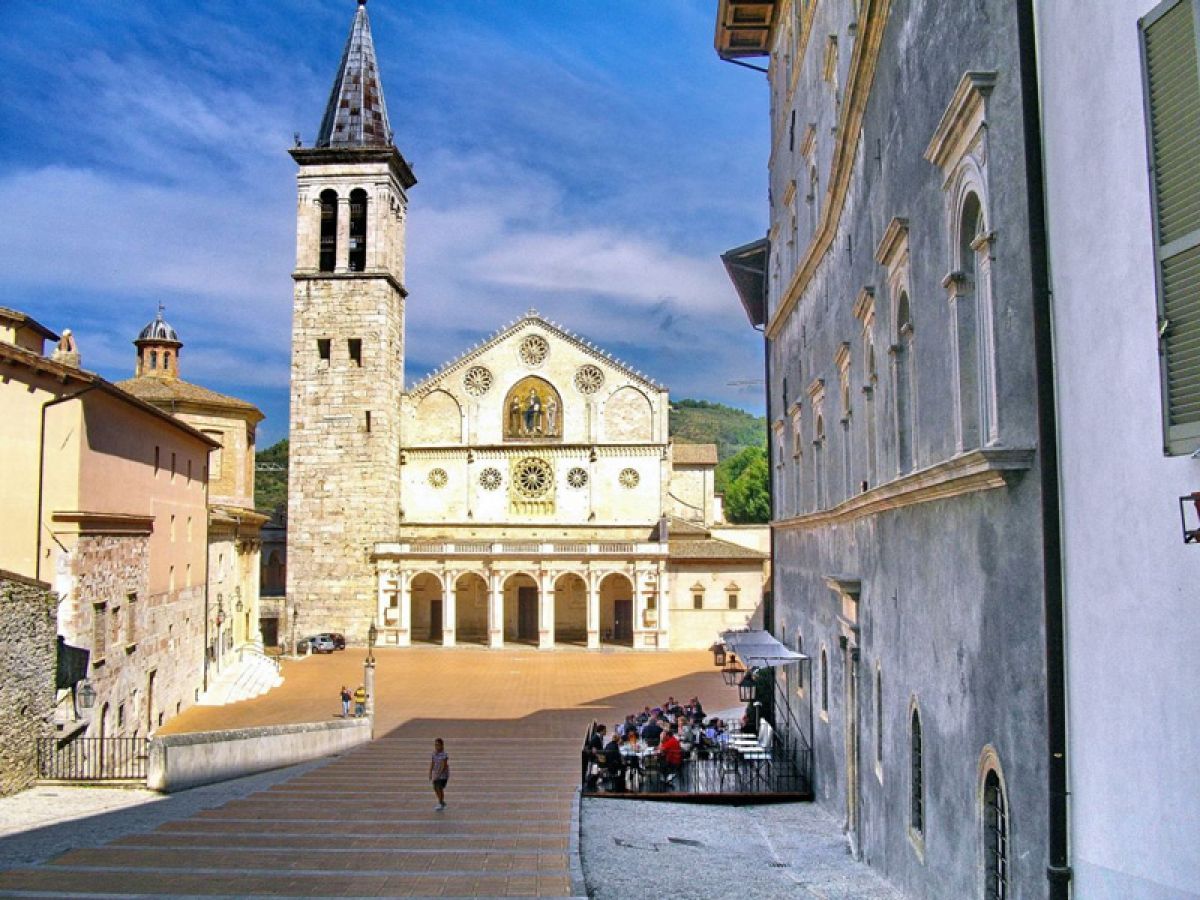
Orvieto in Umbria is perhaps the most beautiful hill town in Italy, perched up on a volcanic rock, its history dating back to the Etruscans.
Although just an hour from Rome, the architecture is different, with many of the buildings constructed out of “tufo”, a volcanic rock. Orvieto’s main attraction is its 14th-century Cathedral – a masterpiece of Gothic architecture with a glistening façade of stained glass, mosaics and sculptures. Another attraction is St. Patrick’s Well, a 62-meter-deep (203 feet) feat of engineering characterized by two spiral staircases that wind around the well (yet never meet), with 248 steps down to the water. A pleasant guided tour along a straightforward route makes it possible to know Orvieto’s underground world, created by its ancient inhabitants over about 2,500 years of uninterrupted digging. A tour at the discovery of a millenary, surprising and unexpected “Underground City”, you will surely enjoy it!
At lunch, don’t miss Salumi di Cinghiale o Cervo (boar or deer sausage) and Pecorino cheese and taste the region’s prized white truffle oil together with the delicious white wine of the area, Orvieto Classico!
Civita di Bagnoregio, the spectacular “borgo” slowly sliding towards the valley, is also known as the “Dying City”. The town is famous for its unique position atop a plateau of friable volcanic tuff overlooking the Tiber valley. It is in constant danger of destruction as the edges of the plateau collapse due to erosion, leaving the buildings to crumble as their underlying support falls away.
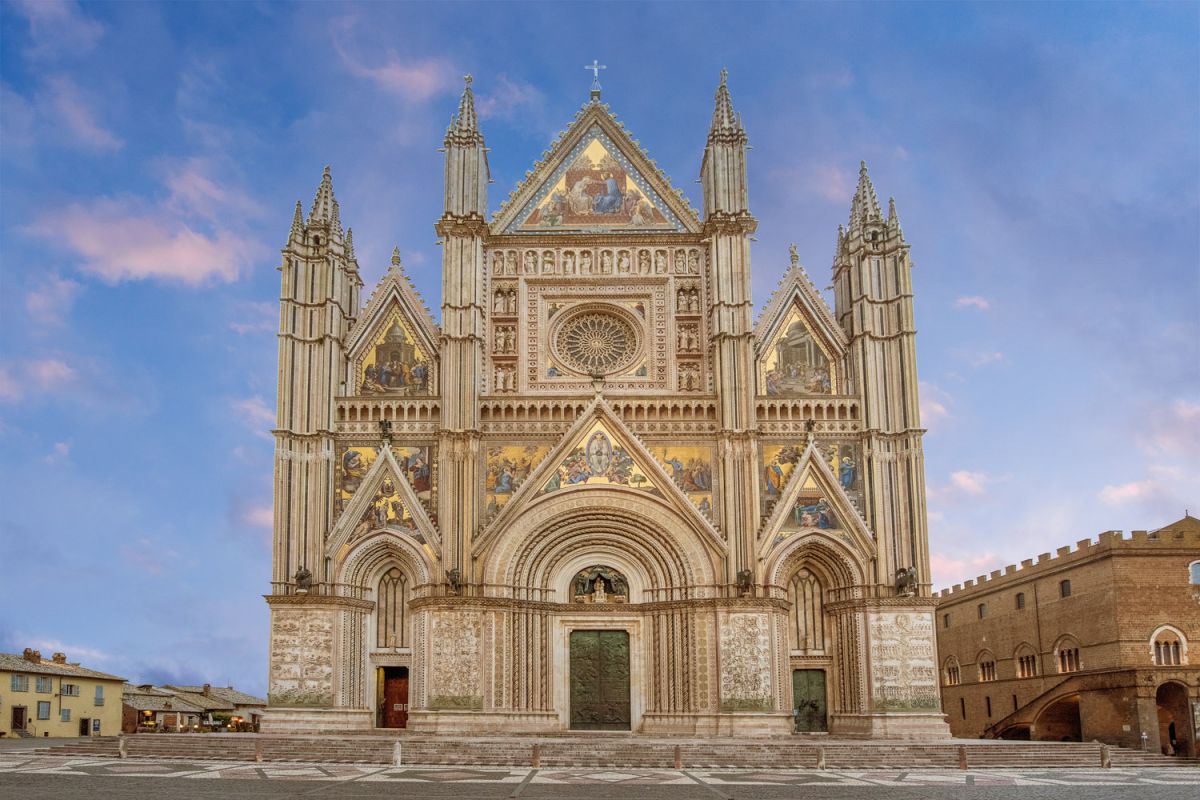
A town of Umbrian origin, Todi was long in contact with the rich Etruscan civilisation that prospered on the right bank of the Tiber. Its perched position and sturdy walls shielded it from barbarian invasions, and it prospered despite the battles of the early Middle Ages.
Just before entering the heart of the historical centre is the imposing Church of Santa Maria della Consolazione, which began in 1508 with a design attributed to Bramante. It is one of the highest works of the Renaissance in Umbria.
In the heart of the city is the splendid Piazza del Popolo, overlooked by the palaces of secular and religious power: the Palazzo del Popolo, one of the oldest municipal buildings in Italy, dates back to 1214; the Palazzo del Capitano in Gothic style.
The 12th-century Duomo consecrated to Maria Santissima Annunziata stands at the end of a steep flight of steps and features a stunning central rose window on its façade.
Beyond history and culture, in Todi even the palate can enjoy the land’s bounty. One of the area’s most appreciated wine products is Grechetto, a white wine with a straw-yellow colour, a delicate bouquet and organoleptic features that recall the gentle and fertile Umbrian hills on which its vine is grown. It is composed of white grapes, of which at least 85% must be of the “Grechetto di Todi” variety, and the remaining 15% of other grapes are strictly from the area.
In the afternoon, you’ll head for Deruta, famous for its splendid, brightly coloured maiolica. The production of ceramics in Deruta goes back to the 13th century. In those times, small “bottegas” produced objects of everyday use: jugs, bowls, and basins. Maiolica reached its apex in the 16th century, with artists representing various motifs, such as mythological figures, battles and religious scenes.
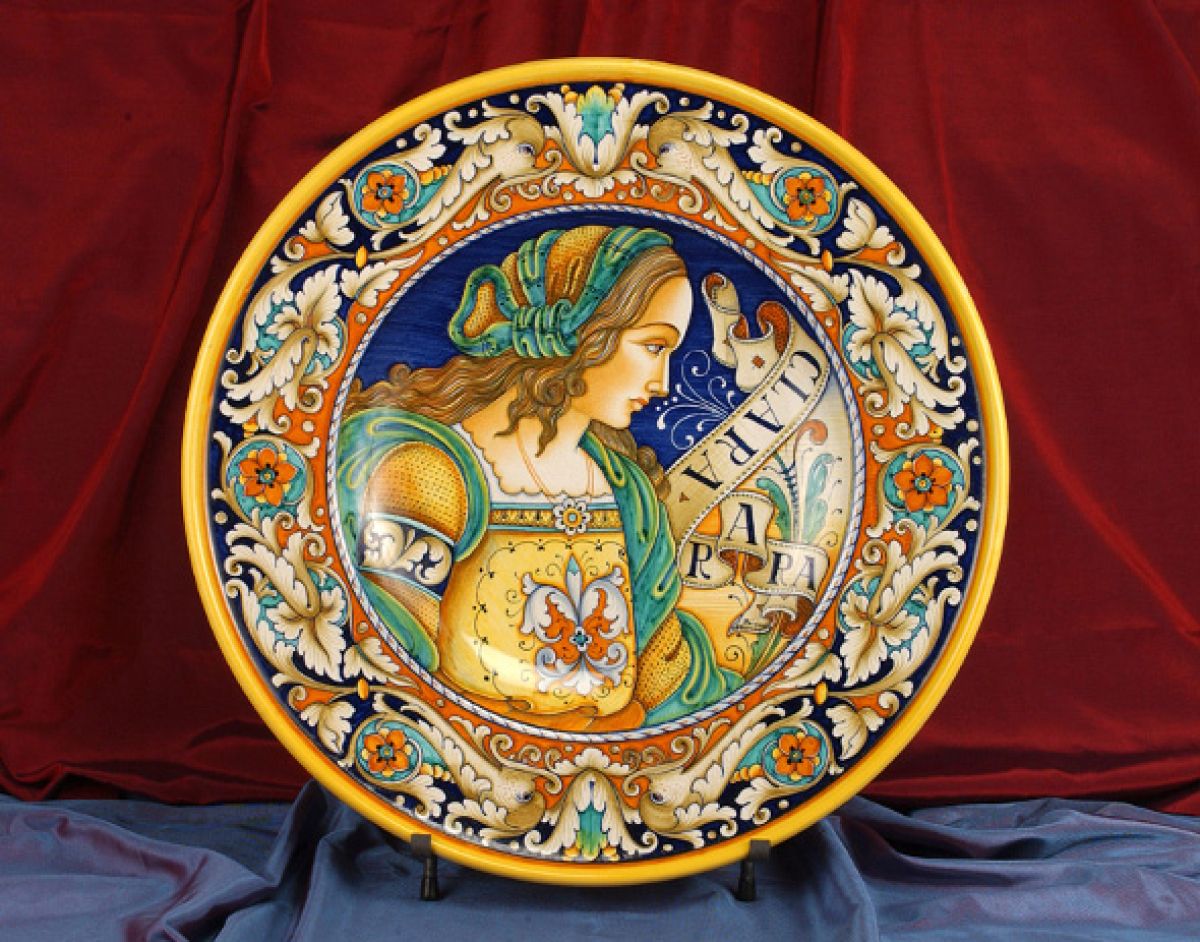
Perugia, the Capital of Umbria, lies on a hill 500 m. above sea level, with the old town spreading all around it and partly surrounded by Etruscan and Medieval Walls. Unfortunately, only a few ancient city remains have survived; the remaining urban centre is mainly medieval in style. The old town is, in fact, a typical Medieval village, one of the most beautiful in Italy.
A sightseeing tour includes Piazza Matteotti, also known as Sopramuro (“above the walls”), with Palazzo dell’Università Vecchia and Palazzo del Capitano del Popolo. Beside it, we will admire one of the most beautiful squares of Italy: Piazza IV Novembre, which can be considered the monumental and social core of the city, with at its centre Fontana Maggiore, a sculptural masterpiece by Giovanni and Nicola Pisano. This architectonical complex includes Palazzo dei Priori, built between the 13th and 14th Centuries, a symbol of the civil power of the time and now the home of the National Gallery of Umbria, which hosts the most important collection of Umbrian paintings, including several pieces by Perugino.
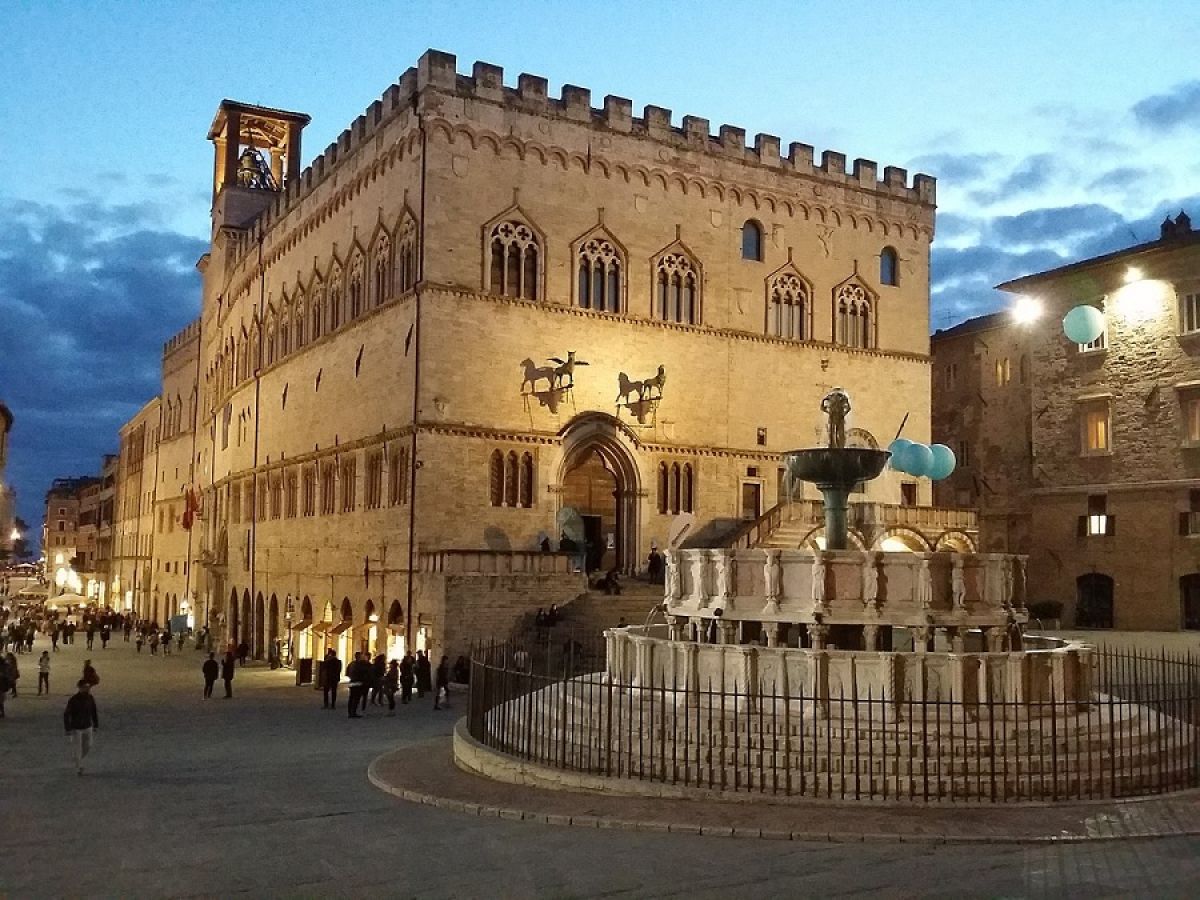
Assisi is the birthplace of Francis, the nobleman who renounced all his possessions to devote his life to helping the needy and became the most acclaimed Saint of the Catholic Church.
The splendid Basilica, one of the emblems of Christianity, located on Mount Subasio and overlooking the entire valley, is dedicated to him. Apart from being a strong appeal to millions of religious believers, the Basilica is a monument of great artistic value. The construction of the Basilica began two years after his death, in 1228, and between the end of the 13th and the beginning of the 14th century, the basilica’s walls were frescoed by the best artists of that time: Giotto, Cimabue, Simone Martini and Pietro Lorenzetti. St. Francis’ Basilica consists of two churches laid upon each other and a crypt containing the tomb of the Saint. The Lower Basilica presents a simple facade with a double front portal embellished with a rose window and a mosaic. The interior is decorated with frescoes by some of the most important painters from 1200 to 1300, from Cimabue to Giotto, from the Lorenzettis to Simone Martini.
In the Upper Basilica, you will admire the frescoes of the life of St. Francis, painted by Giotto, the stories of the Old and New Testament covering the entire nave, and other beautiful frescoes by Cimabue and Torriti.
Another figure who profoundly influenced these places is Saint Clare, to whom the homonymous Basilica -with a facade made of white and pink stone and divided into three sections by horizontal cornices – is dedicated. The interior frescoes and the remains of the Saint are visible through a window in the crypt.
Try to enjoy the mystical atmosphere of Assisi:
“Be praised, my Lord, through our sister Mother Earth,
Who feeds us and rules us,
And produces various fruits with coloured flowers and herbs.”
(St. Francis, Prayer of the Canticle of the Creatures)
Umbria produces the most black truffles in Italy, and their quality is famous worldwide. Truffle hunting in Umbria remains a beautiful and simple pursuit. The image of mountains, hunters, dogs, and a leather bag full of truffles has remained unchanged for centuries. Truffles are one of the most prized ingredients in any kitchen, with each variety of truffle offering its unique aroma suitable for specific dishes.
On your last day, you will experience the thrill of truffle hunting, following our hunter and his hounds through the woods and experiencing the surge of excitement as they locate these edible treasures.
The tour is over, but the memories of a fantastic journey will accompany you for a lifetime!
See more about your destinations on our YouTube channel.
Arrivederci with another tour at the discovery of Italy with VITOR, Visit Italy on the Road.
